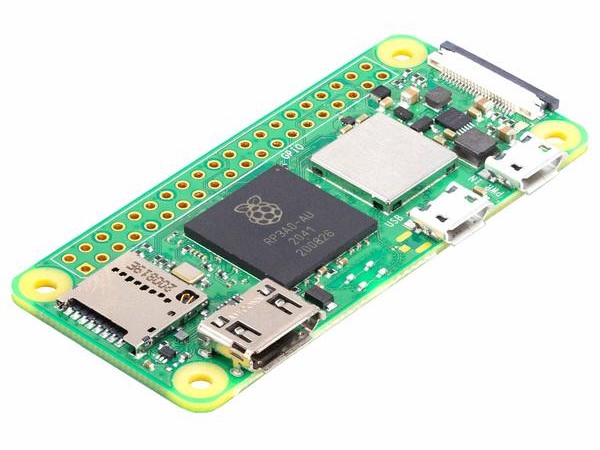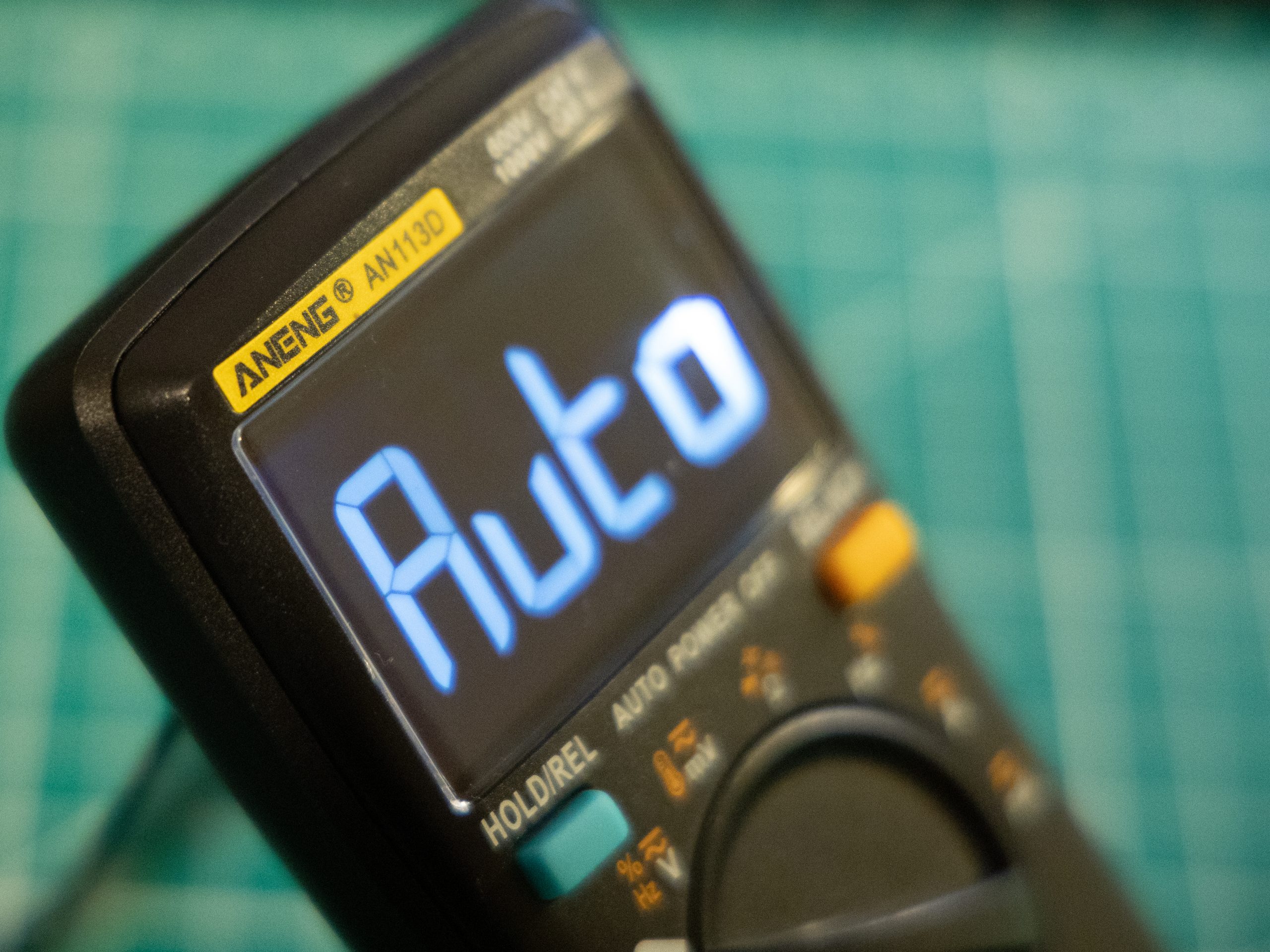Find reviews of the latest embedded systems hardware and software here. If you would like to stay up to date with the news and our reviews (without returning here all the time) sign up to our monthly newsletter here.
We never take payment in any form for our reviews. Sometimes we may receive review units from manufacturers but this never influences our review.
November 7, 2021It has been six years since the launch of the Raspberry Pi Zero, a small form factor single board computer. Whilst it got a small refresh in early 2017, with the addition of wireless connectivity, a major update has been a long time coming. Last week the Raspberry Pi Foundation released the Raspberry Pi Zero 2 W.
The Raspberry Pi Zero 2 W.
Price
One of the headline features of this board is actually it’s price. The Raspberry Pi Foundation is listing the Zero 2 W at just 15 dollars, which is about £11 in UK money. However, we haven’t yet found a UK retailer selling it under about £13.50 which is a shame. Note that there is only one skew of the Pi Zero 2 and that is the W skew with WiFi and Bluetooth connectivity so there is no upgraded model of the Zero without wireless functionality.
The Raspberry Pi Zero 2 W.
Features
Pretty much the only change to this board is a direct replacement of the system on a chip (SoC). The original Raspberry Pi Zero W had a single core Arm processor clocked at 1 Gigahertz. The new Pi Zero 2 W features a quad-core arm A53 CPU also running at 1GHz although this can be overclocked up to 1.5GHz according to Les Pounder from Tom’s Hardware. We will be covering overclocking the Pi Zero 2 W in an upcoming tutorial! Onboard there is 512MB ram which is part of the RP3A0 system in a package (SiP). You can see how the original Pi Zero’s stacked the RAM on top of the CPU but in the newer version it is all incorporated into the same package.
EXIF_HDL_ID_1EXIF_HDL_ID_1Right: Original Raspberry Pi Zero W RAM stacked on top of the CPU.Left: New Raspberry Pi Zero 2 W SiP with RAM integrated
The remainder of the features remain mostly unchanged from the original Zero W. There are two Micro-USB connectors (one for power and one for USB 2.0), a mini-HDMI connector, a micro SD card slot and a CSI camera connector. The WiFi connectivity has been slightly upgraded and can support slightly faster WiFi speeds but can still only support 2.4GHz networks. In terms of the ports, whilst we understand that this board is supposed to be a drop in replacement of the original, we can’t help but wish they had gone for USB-C connectors. Most USB devices you connect to this board will be via a micro-USB to USB adapter anyway so it wouldn’t be too difficult to swap that over to a USB-C adapter and it would give it a bit more future-proofing. We can imagine having to convert micro-USB to USB-C and that seems a bit pointless.
In terms of dimensions, the Pi Zero 2 W is identical to previous zero boards at 65mm by 30 mm. All the mounting holes remain in the same place and the new board can be directly dropped into a case designed for the previous zero.
Performance
So how much impact does this new quad-core processor make? Well it certainly isn’t going to challenge some of the full sized raspberry pi’s like the 3 or 4. This is predominantly due to only having half a gigabyte of RAM which is also shared with the GPU. So performance with a graphical desktop isn’t fantastic but is better than the original Pi. We imagine most people using this board will be running in headless mode. That is without a graphical desktop and this will increase performance as there are much less overheads.
To put it simply, the more powerful processor does equal a significant performance boost. For example, in a bzip2 file compression test, the Pi Zero 2 W was just a tad over twice as fast as the original Pi Zero when compressing the same file. By now the Pi Zero 2 W has been pretty heavily benchmarked so if you want plenty more numbers, have a look at Gareth Halfacree’s article about benchmarking the Pi Zero 2 against the original Pi and the Pi 3/4.
Power Consumption
With the dramatically increased performance of the RP3A0 chip we expect some increase in power consumption. The primary comparison for this is going to be the original Pi Zero W. In our testing, the original Pi Zero idled at 100mA in headless mode. Under a CPU stress test this bumped up to 260mA. The Pi Zero 2 W idle’s around a similar point, about 120mA but under load this almost doubles to about 500mA.
Conclusion
In conclusion, the Raspberry Pi Zero 2 W is a fantastic compact single board computer at the $15 retail price. We think that this is going to be an incredibly popular board for a wide range of projects. However, if you need more RAM or ethernet for example then consider getting a lower end Raspberry Pi 4 at just over twice the price. If you need a compact board then it’s difficult to beat the Raspberry Pi Zero 2 W. [...]
Read more...
November 3, 2021The Aneng AN113D is a £10 (~$13) multimeter available from your favourite budget Chinese retailers, Aliexpress and Banggood. We managed to get ours shipped from a UK warehouse, for free, in a couple of days – a record for these sites. So how much multimeter can £10 give you? Read on to find out!
The Aneng AN113D multimeter is a budget multimeter available on Banggood and Aliexpress for around the £10 mark.
The AN113D is available from (prices at time of writing):
Banggood (Referral Link) £11.64AliExpress £11.79
What’s in the “box”?
The contents of the shipping bag includes most of the accessories you need.
The multimeter was shipped to us in a bubble wrapped bag which included:
AN113D Multimeter1 pair of probesA thermocoupleAn oversized sunglasses bag
Notable emissions from the kit includes batteries, you will need to install two AAAs found in a compartment under the kick stand.
You will need to provide two AAA batteries.
Who is this for?
At this price point, we reckon that this multimeter is targeted at people who occasionally need a multimeter. We would use this multimeter for those times you need to board-level troubleshoot your projects. If you plan to use this multimeter for more frequent use then we would advise spending a little more money on a more durable multimeter.
Features
The AN113D has pretty much all the features you need from a basic multimeter. It has the standard voltage, current and resistance measurements, all with auto-ranging functionality. The continuity checking function is accessed through selecting the resistance measurement function then pressing the SEL button. The buzzers is sounds like something is dying inside with multimeter but is completely fine once you get over that. There is also a HOLD/REL button for freezing a measured value on the screen.
There aren’t really any obvious omissions from the feature list. It would have been nice to have some more functions “broken out” to the dial rather than the selection button. For example, the resistance measurement and the continuity checker could be on separate physical locations on the dial.
In our testing, the “Auto” function was more frustrating than auto. It is much faster to select the function you need first.
It also adds thermocouple support (with one supplied in the box) which is a welcome feature at this price point. The thermocouple is very quick to get set-up and could be used in a pinch. No specifications of the thermocouple are provided however, which makes its accuracy and temperature limits somewhat unknown.
The thermocouple feature appears to match sensor we know to be accurate at room temperature.
The supplied probes feel very cheap. Whilst they work perfectly fine, we would hesitate putting them anywhere near mains voltage. The lack of voltage isolation markings on the probes doesn’t exactly instil trust. We recommend swapping out these leads if you are going to do any high voltage work – just to be safe.
Build (& Build Quality)
The main material used on the AN113D is hard plastic with no rubber grips. The built-in kick stand has a plastic stand and will likely be the first thing to break on this device. The display is bright enough and the text is easy to read. The selection dial is remarkably solid with good clicks between choices and little play.
With dimensions of 130 x 65 x 32mm and 114g (without batteries), the AN113D is certainly pocketable. It will have no problem fitting on your desk or in that draw where you put everything – that’s not just us with many of those draws right?
At this price point, the build quality is perfectly adequate.
Summary
If you are in the market for a cheap but useable multimeter for occasional use, the £10 ANENG AN113D is a no brainer. As long as you don’t expect Fluke-like quality, durability and warranty then you will most likely be happy with the AN113D. However, if you plan to use your multimeter regularly then the AN113D might not hold up in the long run and you should consider upping your budget slightly.
The AN113D is available from (prices at time of writing):
Banggood (Referral Link) £11.64AliExpress £11.79
Let us know what you think down in the comments! [...]
Read more...

